
Genentech
It’s not every day that we get to work with clients who are actually saving lives. So, when Genentech called, we leapt. Formed 40+ years ago over a beer and an argument—the company had grown into one of the most successful and pioneering biotech firms in the world. But they’d been hands-off with telling their own story. With an awesome history and an insanely great culture—one built around a clear sense of mission—you’d think that story would be a snap to tell. Instead, they were getting lumped in with the rest of the pharmabro extortionists out there—fleecing patients who were fighting for their lives. To help wrestle the story back, the brand team had hired another agency to develop a campaign concept that, after many rounds, had gotten the green light from exec staff. Problem was, it needed a bit more firming up and filling out to be viable. That’s where we came in. We helped our clients infuse the campaign with meaning, give it some structure, scale it over time, and explain it internally and to the world.
And along the way we showed a room full of geneticists how Three’s Company works.

The Problem
—
We’ve landed on an awesome slogan, we’re just not sure exactly what it means.
Clearly, Genentech has a rich history of innovation. Their pioneering spirit and unquenchable thirst for knowledge has been pushing the boundaries of science for over four decades. And they’ve basically created an entirely new approach to drug development—moving an entire industry from a pharmacological (or chemistry-driven) model to a more biology-driven model, focused on building technologies and drugs that tap into the body’s power to fight disease and heal itself. Having seen their fortunes rise as their audacious curiosity grew and grew, they’d eventually come to be seen as the place to do leading-edge science. The culture was amazing. The work, groundbreaking. Seriously, they were literally saving lives. But, in the public’s mind, all of that was hazy at best. At worst, they were seen as the same sort of big biotech profiteer (charging insane amounts for lifesaving medications) that every other pharma company seemed to be. They’d never done a particularly good job of telling their story. They’d been way too reactive—looking at the ground in front of them instead of the horizon. And they’d never proactively driven the conversation about what they do and why it matters. Especially after the Roche acquisition, they’d let others tell their story for them (often to negative effect). Thing was though, they actually had incredible stories to tell—stories about everyday people working hard to add precious, epic moments of joy to patients’ lives.

That notion, that true story about their origin and purpose in the world, had lead the internal brand team to engage another agency to explore ways of creating a campaign—a conceptual hook that people on the inside could rally around and a tagline that folks on the outside could take in and, hopefully, understand. And after many, many rounds, their agency and the internal team landed on a set of options that had gone all the way to the top. In the end, everyone at Roche and everyone in senior leadership at Genentech had signed off on a clever, alliterative two word slogan—Everyday Epic. Nice, right? It’s big and small, quotidian and aspirational. Rife with possibility. Problem was, as it started to leak out across the organization, people started interpreting it a million different ways. Being the scrappy self-starters they are, they just sorta ran with it—without a lot of guidance. And, in the end, more questions than answers emerged. People wanted more. They wanted to know what it actually meant—for them, for their groups, for the types of storytelling they needed to do. Like, is it just replacing the old tagline? Or is it more? How am I supposed I use it? Where’s it going to live? That sort of stuff.



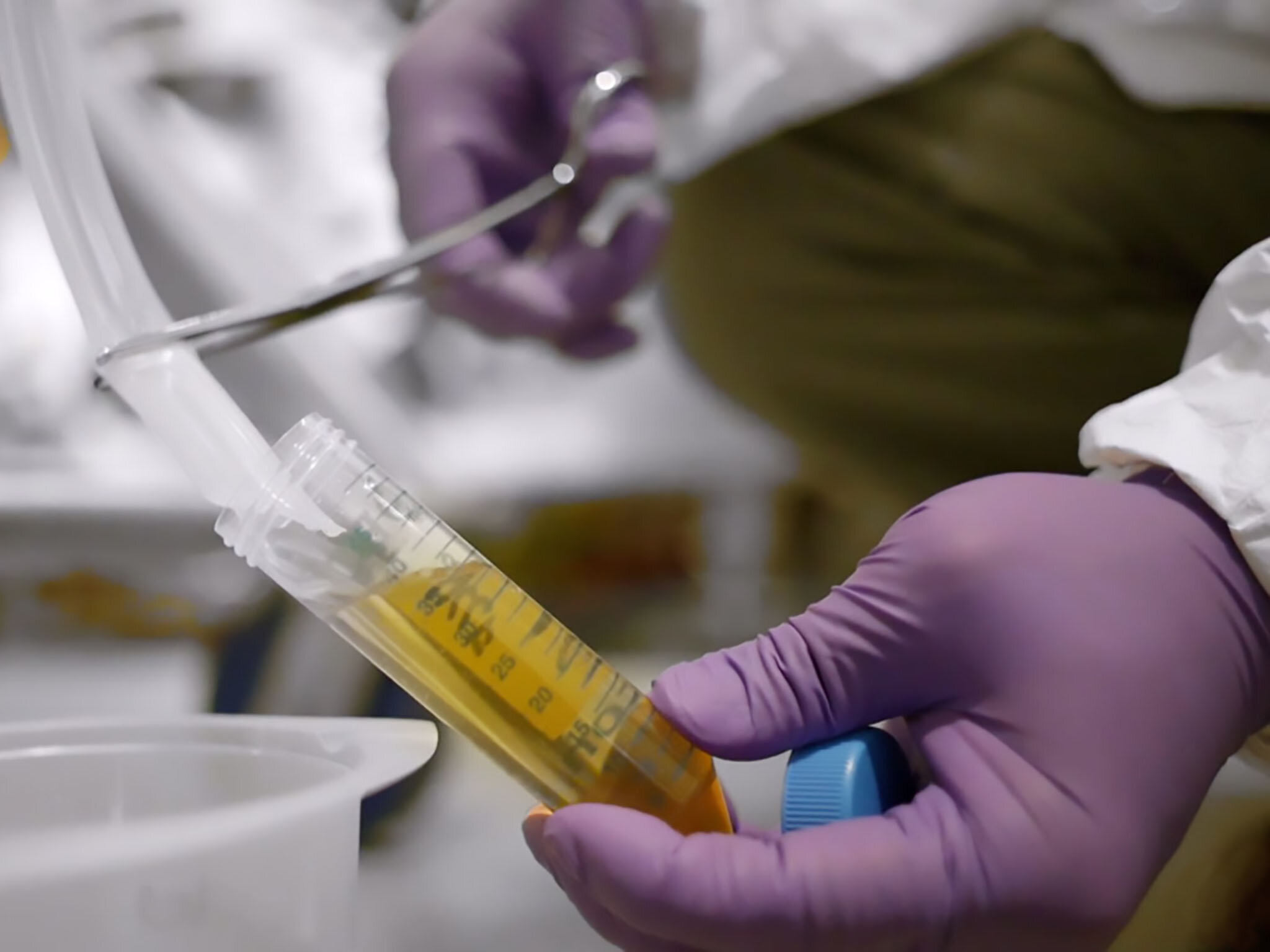
The Research
—
Everyday Epic is nice, but it needs some definition if it’s really going to land.
So, after we started chatting with folks across the organization, we got a pretty crisp and clear sense of why Everyday Epic resonated with the execs. It’s catchy, sure. But it’s also amazingly in tune with the more internalized mission statement(s) that people had been carrying around in their heads for years. It’s about celebrating the little discoveries—in life and science. It’s about how those little things add up to big things. It’s about people—the people who never stop striving individually and collectively to make a difference. It’s about science—the relentless and incremental labor that leads to powerfully important advances. It’s about patients—and giving people the opportunity to enjoy life. So, basically, it was a pithier, more emotionally resonant way of promising what the parent company’s more elliptical tagline (Doing Now What Patients Need Next) hinted at. All good. Now, why weren’t people really grokking what to do with it? Perhaps because it had only soft launched internally. It wasn’t explained. If you knew about it, you were either in on the decision (and knew the backstory) or you’d heard about it through the grapevine (and knew it might somehow be part of your performance review). It was time to shore up how to frame it, and then get really solid about the details—so that everyone could take it and amplify it, confidently.


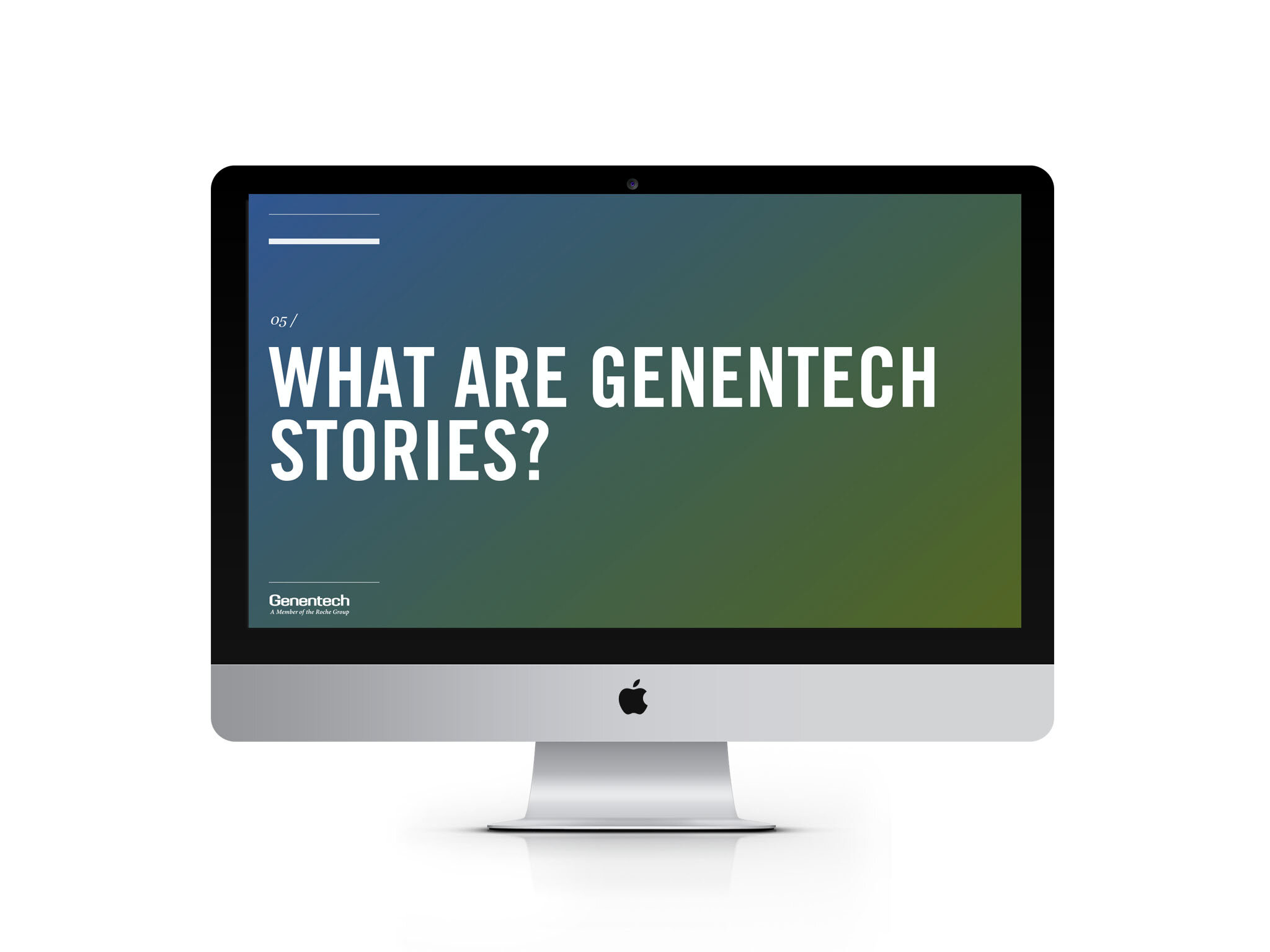

The Insight
—
If we’re actually going to pull this off, we’re going to have to teach key people within in the company to be great storyteller.
The more we uncovered about what was going on behind the scenes at Genentech, the more we realized that they were sitting on a narrative treasure chest—human stories with hardcore, believable struggles (and occasional happy endings) built right in. Seen with outsider eyes, all Genentech stories could be described simply as science stories told in a human way. They’re stories about people—on the inside and outside. They’re about relentless researchers seeking breakthroughs that one day might change a patient’s life for the better. And they’re about patients finding hope in the face of a frightening diagnosis, all because of those same scientific breakthroughs—that hard, day-by-day grind in the lab. With this in mind, we were able to start framing the rationale behind Everyday Epic, and developing the recipe that would undergird the Everyday Epic ethos out in the world. But, even with those simple guidelines (Is it human? Is it truthful? Is it structured? Is it purposeful? Is it parseable?) we realized that there were some more fundamental storytelling skills that needed strengthening within the organization. Otherwise, the whole thing might fall flat—or feel rote, too left brain, too analytical. Not personal enough.

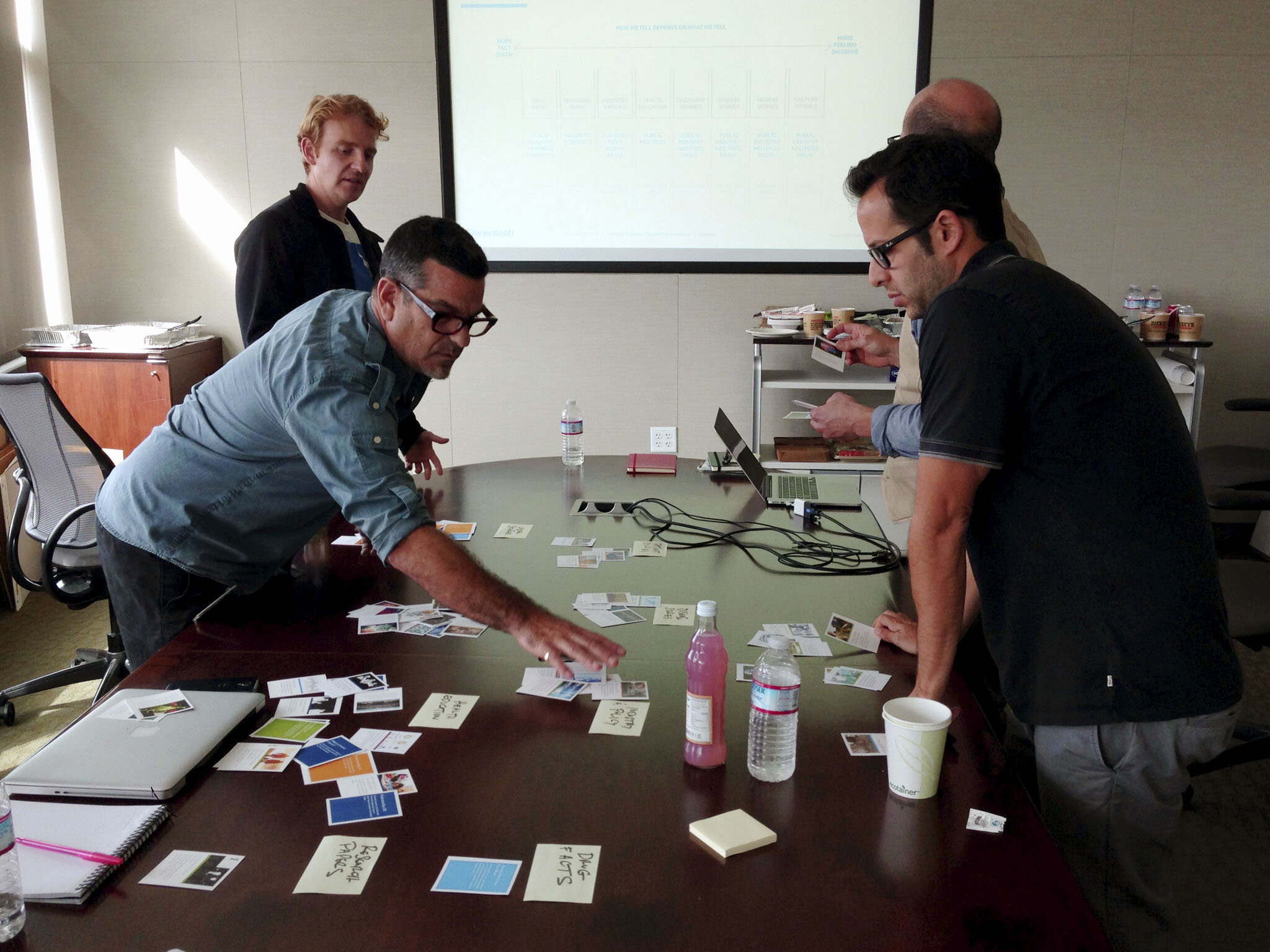

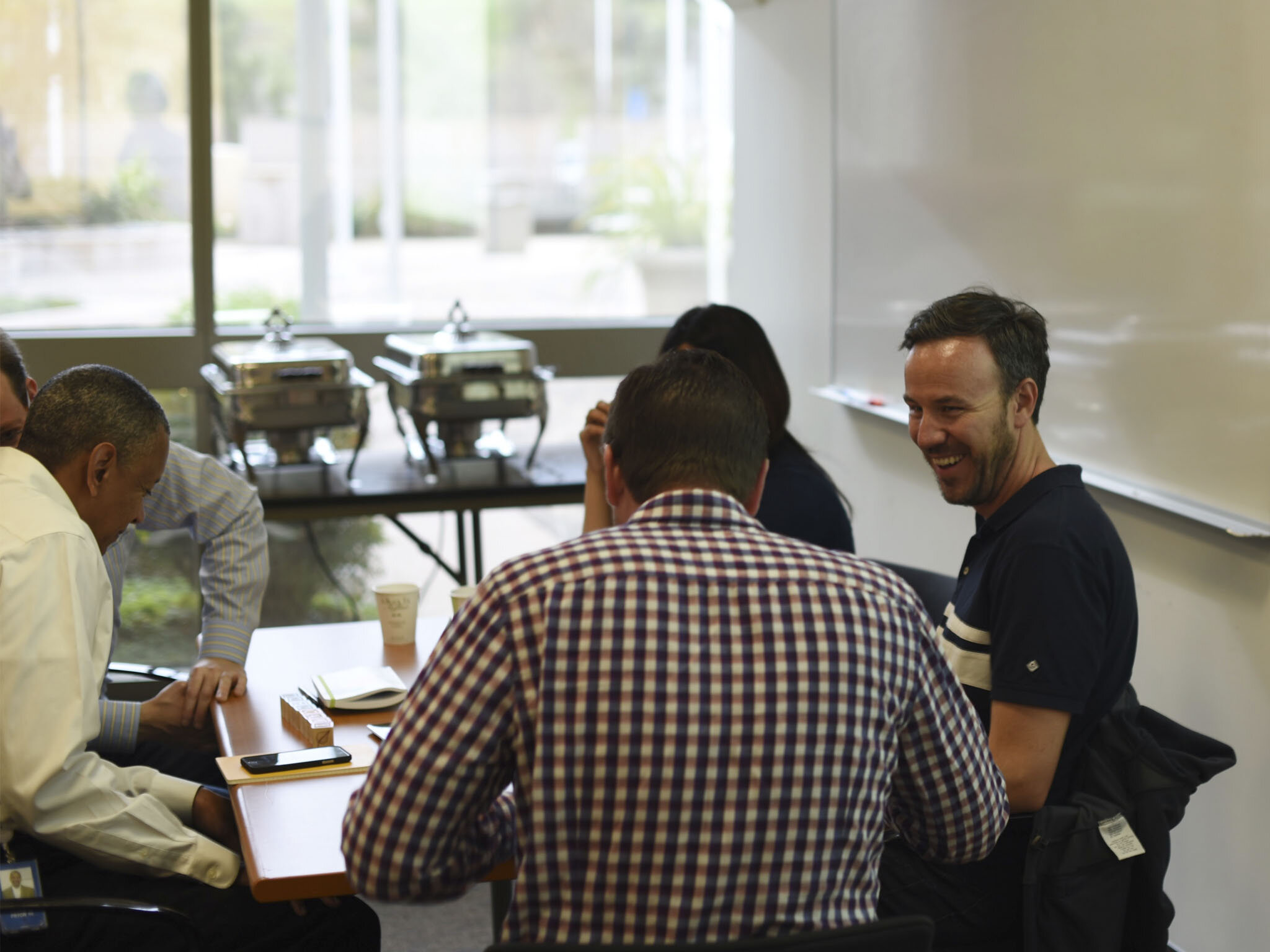
The Answer
—
Do it more like Three’s Company. Or Cinderella. Or anything by Vonnegut.
The best brand stories are human stories. And the best human stories are true stories—stories that resonate. You feel it. You believe it. You’re there. You can see yourself in the shoes of the protagonist. You sense their fear, their frustration. You share their hope, their moment of triumph. When they win, you win. When they struggle, you struggle. And, in the end, you remember the story like you lived it. Now, not every brand can tell stories that big—either to the outside world, or to themselves. But Genentech can. In fact, they had built a whole culture around those sort of stories. Those stories were already being told again and again by generations of employees, partners, patients, and staff. Because, Genentech is the ultimate human potential brand. It’s a brand that promises health, survival, and strength in the face of adversity. And not with the callous end goal of selling more shoes, more soda, or more phones. With the goal of, well, doing now what patients need next—pushing the limits of science to make lives demonstrably better. That’s Everyday Epic. And that’s plain old good storytelling. It’s Cinderella. It’s Plato. It’s Shakespeare. And it’s literally every single episode of Three’s Company (from a structural standpoint, that is). It’s what humans are hardwired to receive. It’s how we learn. It’s how we build feelings around the facts of our experiences.
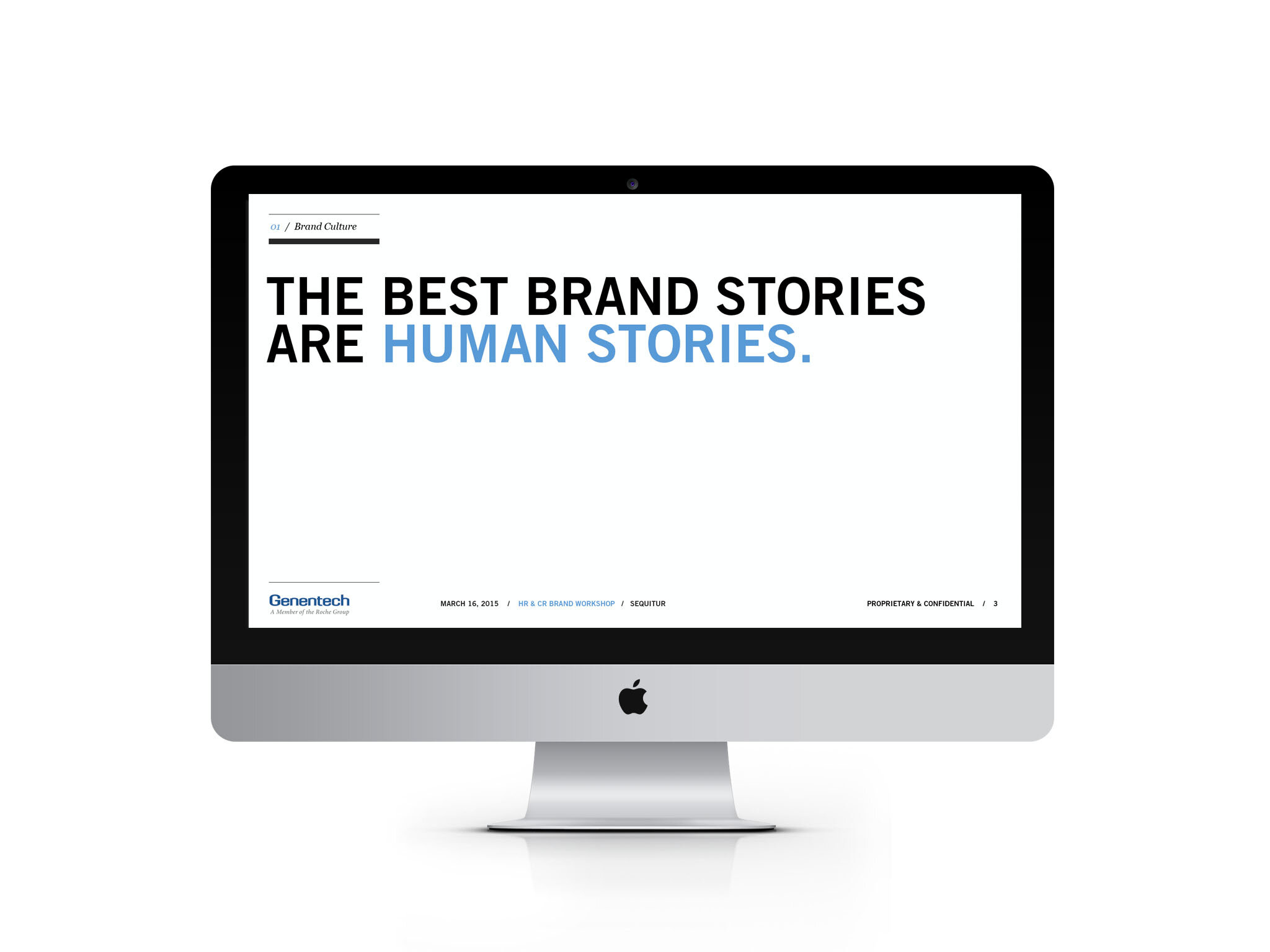
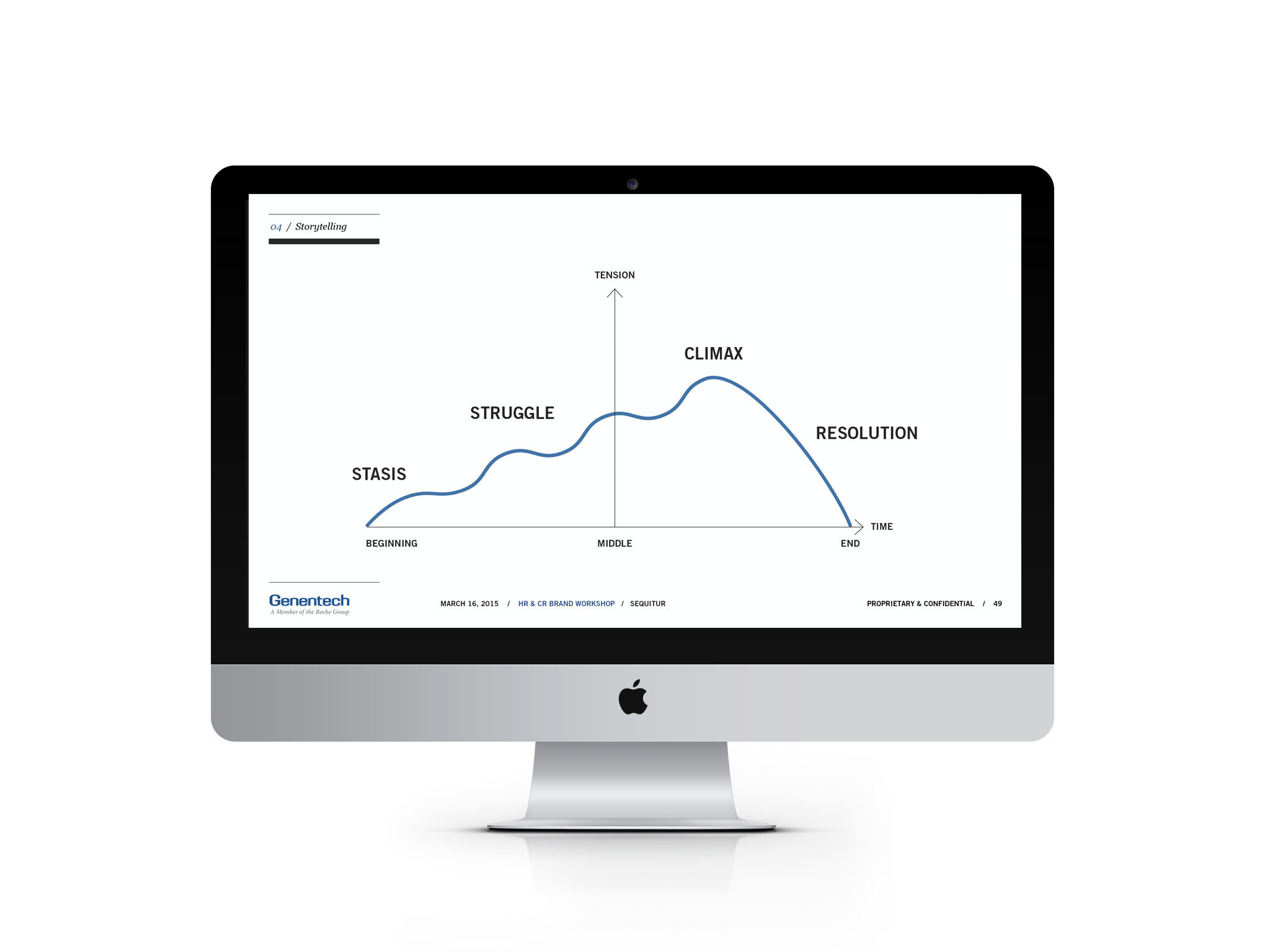
While the company did a great job of remembering, retelling, and celebrating their lore, they weren’t very practiced at telling stories to their customers. They tended to defer to their scientists, who for obvious reasons liked to make science the hero. Our presentations seemed to fall on deaf ears whenever we mentioned story arcs or the struggles of a protagonist. We took that as a sign that while we could hand out halibut all day, what these folks needed were fishing lessons. They needed to know how to put a basic story together for their decks, their ads, their recruiting, even their Twitter feeds. And to nail that sort of storytelling—that deliberate, well-crafted approach to hooking the reader—we were going to have to work our way through the company teaching super-compressed, hands-on masterclasses on what makes good stories great.

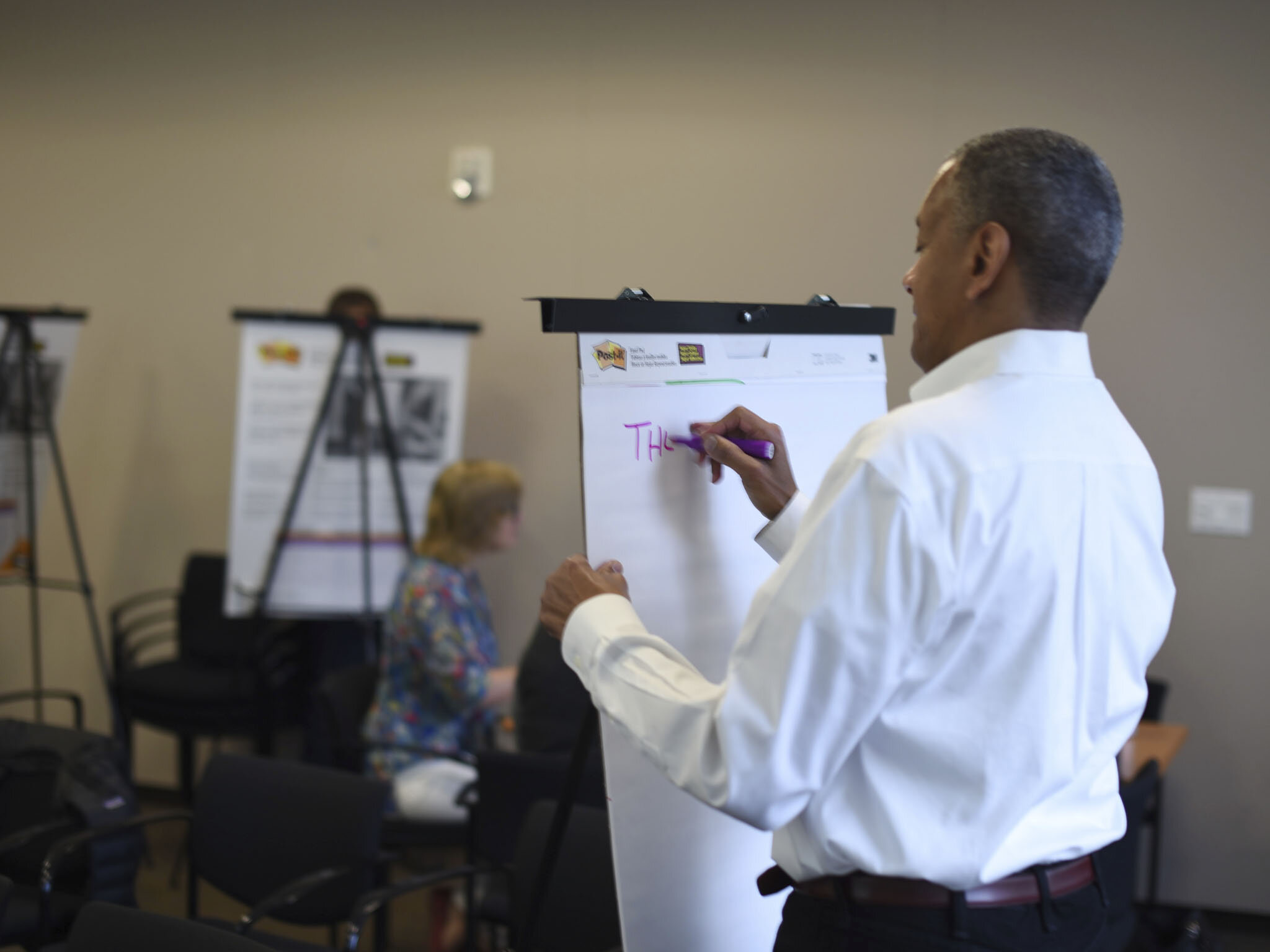
The Work
—
Teaching storytelling—and then getting busy doing some grunt work.
After quickly documenting the ‘system’ and rationale supporting Everyday Epic for circulation within the company (and developing + socializing a concrete editorial calendar for the year), we shifted gears to workshopping narrative best practices for a range of different groups. Because the company had been pretty mums-the-word about their innerworkings previously, our first task was to underscore the challenge at hand—showcasing how being lax about your story lets others define you. Luckily Genentech is rife with personal, moving stories full of villains (cancer, say), knights (stubborn, sleepless scientists) and damsels in distress (patients starting down death sentence diagnoses). By spending the time to reacquaint people with the basic fundamentals of story structure (stasis, struggle, climax, resolution) and the techniques deployed by everyone from Vonnegut to Walt Disney, we were able to get the gears going internally. Could’ve just been that most of the folks we were working with were used to conference rooms being places of sombre attention to detail, or it could’ve been that we actually did spend time dissecting episodes of Three’s Company, but all of our workshops had a hilariously liberating quality—they created a space for people from divisions as diverse as HR and R&D to take ownership over crafting the Genentech narrative. They were as engaging and fun as they were challenging. And, at the end, we saw teams (perhaps for the very first time) understand that the story the company was about to put out into the world was something that they could have a hand in shaping.



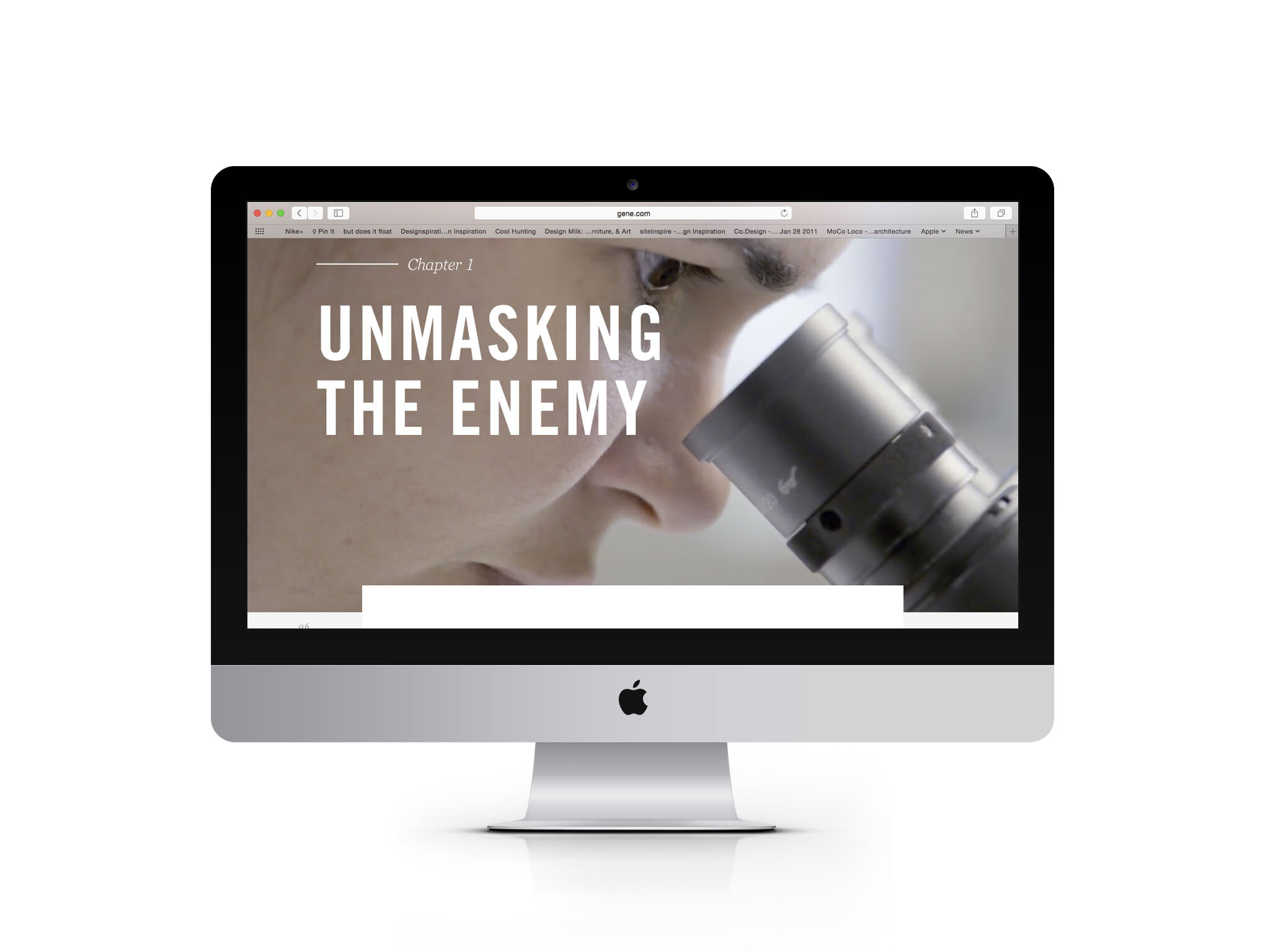
After our brief stint as yarn spinner nerds, we pivoted into generative mode, exploring creative concepts for the company’s upcoming 40th anniversary campaign—basically, the first internal and external manifestation of the Everyday Epic idea. Bringing internal design staff under our wings and into our studio, we did laps on a range of messaging and design directions that would play nicely with the new look and feel, the Everyday Epic ethos, and the core elements of the Genentech identity. Like all good things, the visual language of the campaign emerged naturally from the visual language of the lab. At its core was a set of design elements that were borrowed from the lexicon of modern genetic visualization. They felt scientific without being cold. They referenced the analysis of genetic data, but were also easy on the eye. They brought dynamic modernity to the Everyday Epic campaign. And they were technically accurate enough to please the myriad PhDs roaming the campus. Added bonus, they provided a simple set of building blocks that the internal team could go nuts with with—creating all manner of branded materials for the year-long celebration of the stories of Genentech’s past, present, and future.




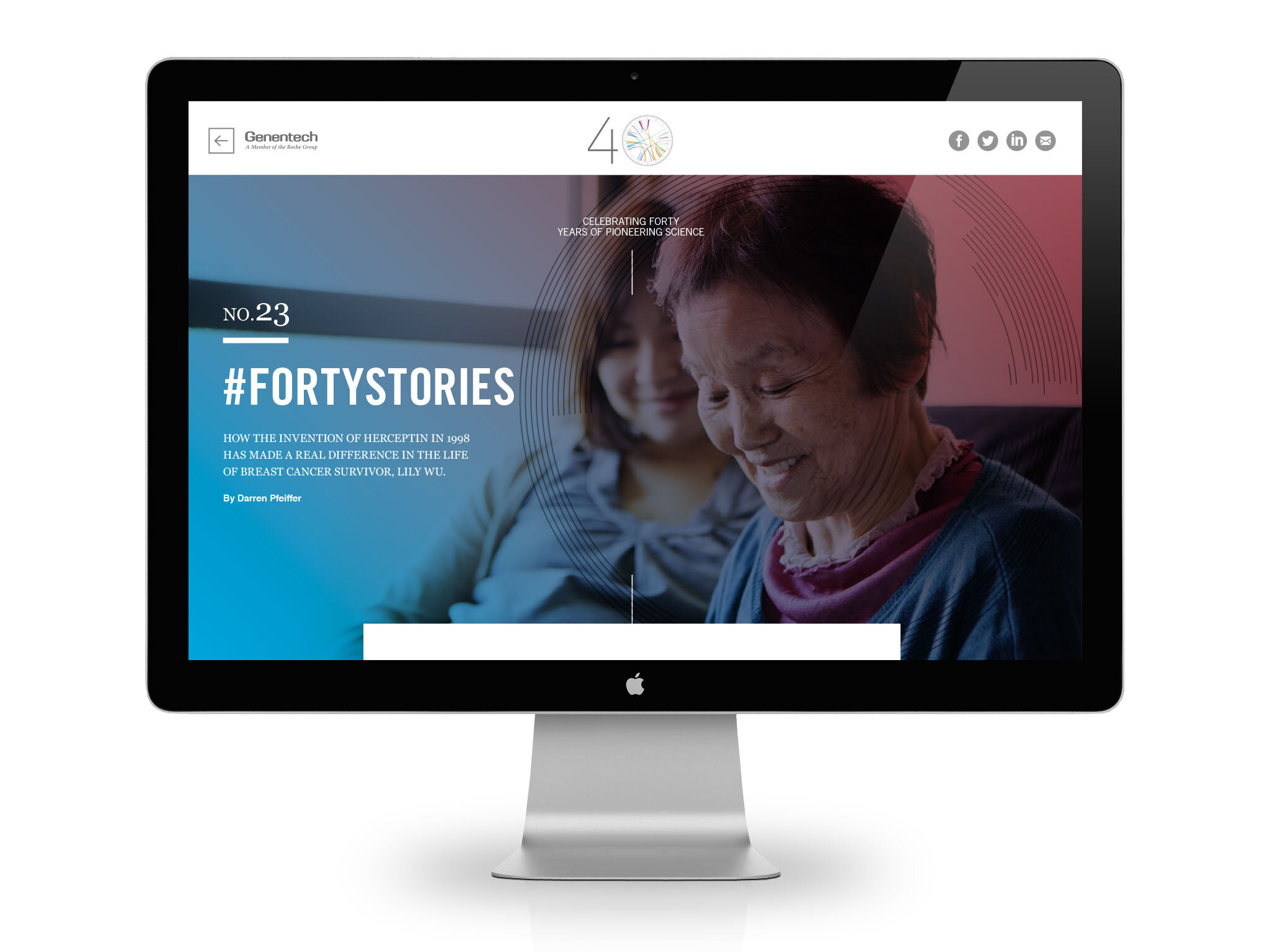

The Ending
—
Seriously sticking the landing with digital storytelling.
Have to say, these guys continue to amaze us with their all-in approach to generating sharable content that’s honest, in-depth, compelling, and human. Whether it’s the hardcore journalistic tour de force of Perseverance (a deep dive into the backstory behind a breakthrough in breast cancer treatment 30 years in the making), the Defining Moments series that was developed over the course of the 40th anniversary (and which has seen 530,000+ pageviews and counting), or the multi-season Two Scientists Walk into a Bar podcast (hosted by Jane Grogan, Genetech’s Principal Scientist of Cancer Immunology), the team within has been nailing digital content in ways we could barely have imagined at the outset. Only about one tenth of one percent of that is something we can even barely, BARELYtake a modicum of credit for. In this case, the urge to own their own story was strong enough within the company that all we needed to do was a bit of bolstering to see it bloom. By lending a smidge of structure and creating a safe place for people to practice, we were able to help the team find their stride and push things way, way further.
Which, after all, is what Genentech is all about.
What We Did
